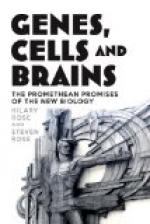|
This section contains 386 words (approx. 2 pages at 300 words per page) |
A Study about Brain Cell Function
Introduction:
Epilepsy- a disorder marked by sudden recurrent episodes of sensory disturbance, loss of consciousness, or convulsions.
Neuron- a specialized cell transmitting nerve impulses.
Neurons are cells in the brain which transmit nerve impulses. Many diseases such as epilepsy, Parkinson's, and other neurological disorders could possibly be cured due to research using electrodes monitoring brain cells.
Content:
This author of this articles writes about a team of surgeons and scientists who monitor a patient's brain cells using electrodes. The article begins with a neurosurgeon Itzhak Fried monitoring a patient named Danny. Dr. Fried puts several images of movie stars and observes how the neurons in his patient's brain respond to these images. Dr. Fried explains that about a dozen tiny holes have been drilled into the patient's brain, each containing an electrode to monitor various individual neurons. The electrodes placed in the patient's brain should pinpoint the neural defects triggering various neurological disorders. Thus this new method of detecting neurological diseases should be much more helpful in locating defects in patients' brains.
Also this new technology will help scientists understand the true inner workings of the human brain. The author postulates the question; can one single brain cell recognize a unique image. Each individual impulse released by Danny's neurons are recorded in a room. The article explicates on an experiment Canadian neurosurgeon, Wilder Penfield used to find out more about epileptic patients. Penfield used electrical impulses to stimulate the neurons in the brain. Each specific neuron Penfield stimulated gave a different reaction. For example, the stimulation of one specific neuron caused a tingle in the left forefinger.
Also in the case of Fried's patient the frontal lobe of the brain caused seizures, so Fried inserted most of the electrodes in that area. The article also explains of an experiment known as X-Cab which is designed to show insights on a human being's episodic memory. The article ends by saying that human beings ignore the majority of information for cognition. The neurons in our brains are more like plastic that adapts rather than the idea that set memory cells remember only unique specific images. A diagram explaining the various types of neurons was used to help understand more about neurons.
|
This section contains 386 words (approx. 2 pages at 300 words per page) |


